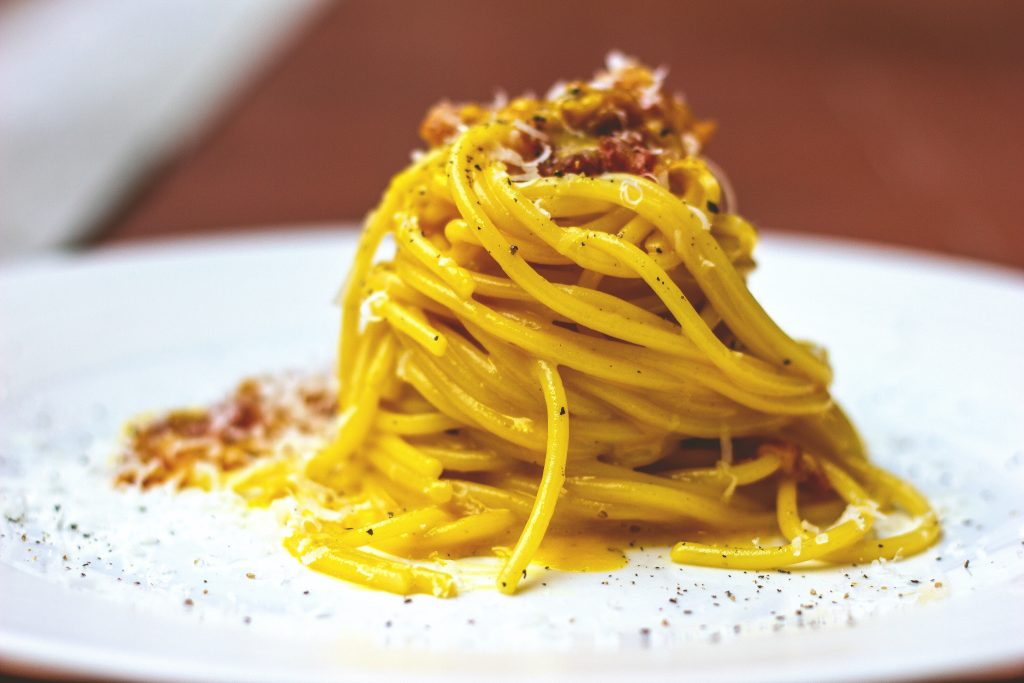Carbonara, a dish cherished for its creamy richness and simplicity, holds a special place in the heart of Italian cuisine. As one of the iconic pasta dishes, its history is steeped in tradition and culinary evolution. Let’s embark on a journey through time to uncover the fascinating story behind the beloved Carbonara.
Origins and Speculations
The exact origin of Carbonara is shrouded in mystery, and multiple theories attempt to trace its roots. One popular belief links it to Rome during or after World War II. Some suggest that American soldiers stationed in Italy introduced locals to bacon and eggs, inspiring the creation of Carbonara.
The “Carbonari” Connection
A captivating theory associates Carbonara with the “Carbonari” secret society, active in Italy during the 19th century. The dish’s name, translating to “charcoal burner” in English, might allude to the coal workers who formed part of this society. However, historical evidence supporting this connection remains elusive.
The Carbonari Society
The Carbonari were clandestine groups that emerged in Italy, particularly in the regions of Naples and Rome, during the early 19th century. The society was characterized by its secretive nature, with members often gathering in secret to discuss political ideas, oppose oppressive regimes, and advocate for constitutional change.
The Symbolism of “Carbonari”
The name “Carbonari” itself is linked to the charcoal-burning industry prevalent in the region. Charcoal burners were considered part of the working class, and their activities often took place in remote, wooded areas. The society adopted symbols associated with their trade, including the shovel and pickaxe used in charcoal production.
Carbonari and Italian Unification
The Carbonari played a role in the movement towards Italian unification, known as the Risorgimento. While their impact varied, their ideals of liberty and independence resonated with the broader sentiment of the time. The Carbonari participated in uprisings and revolutions, contributing to the eventual formation of a unified Italy in 1861.
Carbonari’s Influence on Cuisine
The intriguing link between the Carbonari secret society and the iconic dish Carbonara lies in the symbolism of the “charcoal burner.” Some speculate that the dish, with its association with coal workers, pays homage to the working-class roots of the Carbonari. The simplicity of the ingredients – eggs, cheese, guanciale, and pepper – reflects a humble yet flavorful combination reminiscent of the hearty meals enjoyed by laborers.
The Evolution of a Culinary Legend
While the Carbonari connection adds a layer of historical richness to Carbonara, the dish’s precise origins remain elusive. Whether the name pays homage to the working class, symbolizes political ideals, or is simply a reference to coal workers, Carbonara has become a symbol of Roman culinary identity, cherished both locally and globally.
Modern Interpretations
As Carbonara has evolved over the years, the influence of the Carbonari remains a fascinating aspect of its history. The dish has transcended its historical roots, becoming a culinary masterpiece celebrated for its creamy richness and simple elegance. Modern interpretations may vary, but the essence of Carbonara continues to captivate palates worldwide.
Regional Influences
Carbonara’s emergence is often linked to the Lazio region, with Rome at its epicenter. Local ingredients like Pecorino Romano cheese, guanciale (cured pork jowl), and black pepper are integral to the dish. This regional influence has contributed to Carbonara becoming a symbol of Roman culinary identity.
Evolution of Ingredients
The traditional recipe calls for a simple yet exquisite combination of eggs, cheese, cured pork, and pepper. Pecorino Romano, with its distinct sharpness, contributes to the dish’s unique flavor. While modern variations may include Parmesan or a blend of cheeses, the essence of Carbonara remains rooted in the timeless combination of these core ingredients.
Culinary Controversies
Carbonara’s popularity has led to debates over its authentic preparation. The use of cream, garlic, or onions in some variations has sparked controversy among purists. Traditionalists argue for a purer approach, emphasizing the simplicity of the original recipe without additional embellishments.
Embraced Globally
Despite its Italian origins, Carbonara has transcended borders to become a beloved global favorite. Its popularity can be attributed to its rich and satisfying flavor profile, which resonates with a wide range of palates. Restaurants worldwide feature Carbonara on their menus, adapting it to local tastes while staying true to its Roman heritage.
Crafting Carbonara Today
The preparation of Carbonara today pays homage to its historical roots while allowing for personal creativity. The dish’s allure lies in its simplicity, making it accessible to home cooks and professional chefs alike. As enthusiasts experiment with variations, Carbonara continues to evolve while remaining an enduring symbol of Italian culinary excellence.
Conclusion
Carbonara’s history is a tapestry woven with threads of tradition, speculation, and regional influence. Whether enjoyed in the bustling streets of Rome or recreated in kitchens around the world, Carbonara stands as a testament to the timelessness of simple, flavorful combinations. As you savor this iconic dish, remember that each bite encapsulates centuries of culinary evolution and the enduring spirit of Italian gastronomy.







Be First to Comment